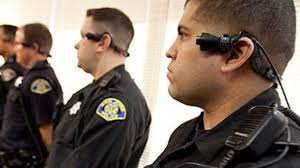How a Body Camera Can Improve Relationships Between the Authority and the Community

Investing in a body camera is a smart decision for any police department. Not only does the camera provide an invaluable tool for documentation and evidence management, but it can also improve relationships between the police and the community. It can also be used to document violent crimes.
Evidence management systems
During every criminal investigation, law enforcement agencies collect digital evidence. This includes videos captured by body cameras, photos, and voice recordings. Evidence management systems enable police officers to store, organize, and retrieve digital evidence from anywhere. Rather than having to physically enter evidence into a database, officers can enter evidence into the system using their smartphones.
Evidence management systems also help investigators identify connections more quickly. These systems allow investigators to organize relevant evidence in a case, and share it with the necessary parties. These systems also allow investigators to print barcodes and reports.
Evidence management systems can help investigators solve cases faster, leading to new leads and crucial connections. These systems are also effective at preserving the chain of custody, which allows for a stronger audit trail.
Evidence management systems are also designed to work seamlessly with crime analysis software solutions. For example, the PMI Evidence Tracker has a configurable Evidence Log, which allows users to search and categorize evidence.
Records of encounters
Using body cameras to record encounters with the public presents unique challenges. In addition to recording, there are also legal questions about what information should be captured and how long should it be stored. This article reviews some of the key factors to keep in mind.
The most basic policy is to turn on the camera at the onset of an encounter. The officer can then decide whether to record or not. If they choose to record, they must also indicate the date and time the video was recorded in the police report.
The recording itself may be redacted in order to eliminate identifying information. This is not always possible, however. For example, the video of a sexual assault may not be released to the public. However, the recording can be used for a court case if it is properly preserved.
Some police departments have created internal policies regarding the use of body cameras. This includes establishing rules of conduct for officers using the technology. Other policies provide protection for vulnerable citizens.
Documenting violent crimes
Providing a check on police abuse of power is the purpose of body cams from Comvision. However, the cameras themselves are not without their share of controversies.
A recent study examining the effectiveness of BWCs suggests that taxpayer benefits may outweigh the cost of buying and maintaining them. A good policy will strike a balance between accountability and privacy.
Using cameras to document police-community interactions has the potential to improve transparency, reduce false complaints, and increase accountability. A newer “auto-triggering” technology can automatically activate cameras when an officer exits his patrol car, which could improve documentation of police-community interactions.
The best way to implement a BWC program is through an effective partnership with the community. This includes working with advocacy groups and the local police union to develop a policy that outlines expectations around camera activation.
A good policy must also protect the privacy of people involved in the recording. One way to do this is to ensure that footage is only used for investigative purposes.
Improve relationships between police and community members
Using body worn cameras (BWCs) to improve relationships between police and community members can be a promising strategy. However, there are questions regarding how they can best be used.
